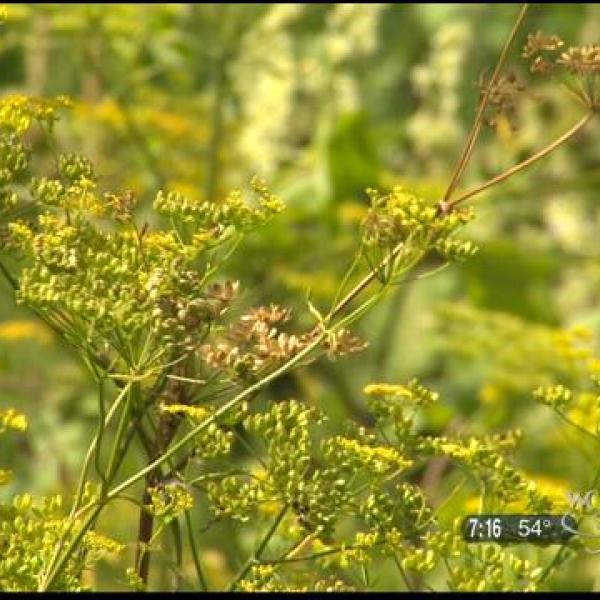
News Source
"ESSEX, Vt. -
As a landscaper, Judson Kimble is used to pulling out tough weeds. But this plant fought back.
"The foliage, the stems, the flowers. Any of it. If you break it, it all has juice inside of it," Kimble said.
That juice earned the wild parsnip its second name, "poison parsnip." And it's the reason Kimble has long, red marks all over his arms. When the sap hit his skin, it reacted with sunlight to cause chemical burns.
"Twenty-four hours later it started to redden. Twenty-four hours after that, it was all bubbling up-- like quarter-inch tall bubbles, pus, pretty gross," Kimble said.
He's been putting aloe on the fading marks, but says the scars could linger for a couple years.
"It's itchy throughout -- not as bad as poison ivy," he said.
That means while the stems may look like a good addition to your bouquet, the Vermont Department of Health says you should avoid them.
"It has pretty yellow flowers on the top, so if people aren't aware, the may think that they should go out and pick these flowers and put them in a vase. But that could really result in some horrible skin conditions," Vermont Toxicologist Sarah Vose said.
The wild parsnip is a pretty common plant in Vermont. It can grow anywhere, but it likes open areas or by the roads, like by 289 in Essex. But that wasn't always the case.
"Wild parsnip seems to have really taken off in the last decade or so," said Elizabeth Spinney, Vermont's invasive plant coordinator.
Spinney says the plant is not native to Vermont, but it has taken a strong foothold, especially in the valleys.
"This plant has impacts to things like the quality of hay in a field. It can have impacts to human health. And it can have impacts to livestock health," Spinney said.
It's often spread through mowing. Which means landscape gardeners like Kimble can expect to see a lot more of it in the years to come.
"Once you start looking, there's just thousands everywhere," Kimble said.
In the future though, he says he might stick to pulling the weeds out with gloved hands instead of mowing.
If you need to work with the plant, the health department recommends covering your arms and legs, and washing anything that comes into contact with the sap. If you can, try to work on cloudy days. And wear face protection if you're mowing.
If you get sap on your skin, you should wash as soon as possible and keep your skin covered for at least a couple days. Skin reactions can start within two days and include redness, burns, painful rashes and raised blisters."
Article Credit: Cat Viglienzoni
Photo Credit: E. Spinney "Wild Parsnip Sign"